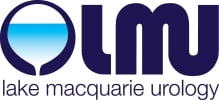This operation involves passing a cystoscope through penis up to the prostate. An electric loop is used to shave the inside of the prostate to widen the urethra running through it. The loop allows electrical cautery to control any bleeding.
A catheter is inserted into the bladder at the end of the procedure for continuous irrigation. The 3-way catheter has a port for the balloon, and inlet and outlet ports for fluid irrigation. This system simultaneously infuses fluid and drains urine at the same time to flush any blood clots from the bladder immediately after the operation.
The irrigation solution used is normal saline (salty water). The irrigation may be run quickly at first but can be adjusted depending on the amount of blood. This will continue until you have the catheter removed.




